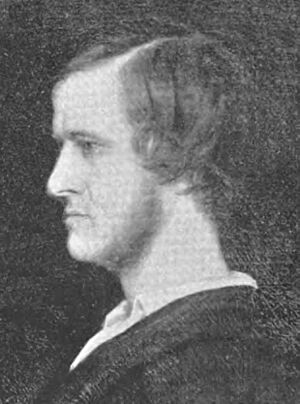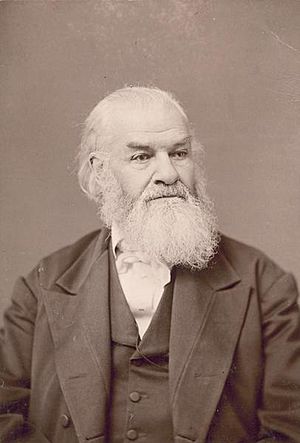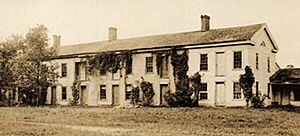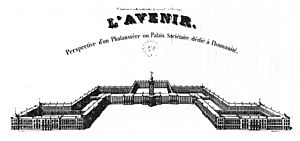Ceresco, Wisconsin facts for kids
Quick facts for kids
Ceresco
|
|
|---|---|
| Nickname(s):
Wisconsin Phalanx
|
|
Ceresco, also known as the Wisconsin Phalanx, was a unique community in Fond du Lac County, Wisconsin. It was started in 1844 by people who followed the ideas of Charles Fourier. He believed in a special way of living together called "Association."
At its busiest time, about 180 people lived in Ceresco. They farmed almost 2,000 acres of land together. Ceresco was one of the longest-lasting Fourierist communities in the United States. It closed down in 1850. What made it special was that it had more money and property than debts when it ended.
Because the community was officially registered, the small village of Ceresco, Wisconsin continued even after the original experiment ended. In 1858, the remaining people and land of Ceresco became part of the nearby town of Ripon, Wisconsin.
Contents
Ceresco: A Community Experiment
What Was Fourierism?
In the 1830s, a man named Albert Brisbane became very interested in the ideas of a French thinker, Charles Fourier. Fourier believed that society could be organized in a better way. He thought that if people lived and worked together, they could produce more and meet everyone's needs.
Brisbane studied Fourier's system in Paris. He then returned to the United States to share these ideas. He wrote books and articles explaining Fourier's concept of "Association." His ideas became very popular.
One important person who supported Brisbane was Horace Greeley. He was a newspaper publisher. Greeley helped spread the word about Fourier's ideas in his newspapers. This led to a "boom" of new communities. From 1843 to 1845, more than 30 Fourierist "phalanxes" (communities) were started. The Wisconsin Phalanx, or Ceresco, was one of these experiments.
How Ceresco Started
People in Wisconsin also became interested in Fourier's ideas. In the fall of 1843, a group in Kenosha (then called Southport) began discussing them.
One of the most interested people was Warren Chase. He was 30 years old and believed strongly in the "Associationist" plan. He helped organize meetings to create a plan for a local "phalanx."
On March 23, 1844, a formal meeting was held. Leaders were chosen, and a constitution (a set of rules) was printed. People could buy shares in the new community for $25 each. By May 1844, 71 people had joined.
The group found a good piece of land. On May 8, 1844, they decided to buy 800 acres. By that fall, they had bought 960 acres. People were told to bring tents for temporary homes.
The first group arrived on May 25, 1844. There were 19 men and one 7-year-old boy. They named their community "Ceresco" after Ceres, the Roman goddess of harvest. They immediately started farming and building. Their first main building, called the "long building," was finished in 1845. It was 208 feet long and 32 feet wide.
Life in Ceresco
The land for Ceresco was bought without any debt. A stream called Crystal Creek ran through the property. This was good because they could use it to power a mill. There was also plenty of limestone for building.
When they arrived in 1844, the colonists quickly planted crops like potatoes and wheat. By fall, they had built three buildings. These could house about 80 people. At first, everyone cooked and ate together in a single kitchen and dining hall.
Tents were used for many months until enough homes were built. Over time, some families wanted to cook their own meals. They were allowed to do this, but most people continued to eat together.
Meetings were held regularly to discuss community business. There were also many social gatherings. The community had strict rules about behavior. People could be expelled for things like rude behavior, lying, stealing, or being lazy.
Beliefs and Values
The Wisconsin Phalanx cared a lot about honesty and self-control. Even though it wasn't a religious group, it had strong moral values. Albert Brisbane, who promoted Fourier's ideas, believed that loving God would lead to more love among people.
The community held Sunday school and Bible study classes. Different religious groups used the main hall for their services. Warren Chase, a leader, said that people from different religions worked together. They put aside their differences to build a united community.
Growth and Challenges
Ceresco continued to grow until 1846. They owned 1,633 acres of land, with about 800 acres used for crops. The leaders were very careful about who they let join. They accepted only a few new families, even though many people wanted to join.
Over time, they built a stone schoolhouse in 1845 and a reading room in 1846. They also built a washhouse, a henhouse, and a sawmill. A blacksmith and a cobbler worked in the community. Farming was the main activity for most members.
By the end of 1846, Ceresco had 180 residents. This included 56 men, 37 women, and 87 children. There were 36 families and 30 single adults. This was the most people Ceresco ever had. However, a sign of trouble was that many families (21 out of 36) were now cooking and eating separately.
Even though some families left, many people still wanted to join. But the community only accepted a small number of new members.
Why Ceresco Ended
By 1847, the Fourierist movement across the country was slowing down. Ceresco also started to see its membership decline. Even Warren Chase, who was usually very positive, admitted that some families were unhappy.
Living together closely in the "long house" was difficult for some. There were disagreements about building new collective homes versus separate family homes. Also, more members became vegetarians, which made common dining harder. Many intellectuals in the group missed having a proper reading room.
As the land value increased, the community started asking for more money from new members. This meant fewer new people joined, especially those who were good workers but didn't have much money. This led to the community becoming stagnant.
By the end of 1847, membership had dropped to 157 people. The community's flour mill started working, and the land value helped keep the group financially stable. But the signs of decline were clear.
When people left, the community bought back their investments. Since most of the money was in land, these payments were often promises to pay later, with interest.
Membership continued to fall in 1848. Only 120 people remained. Six families left, and only three joined. There were also seven deaths, mostly young children.
The End of the Experiment
By the summer of 1849, it was clear that the Wisconsin Phalanx would close. Many members wanted to buy parts of the communal land and create a regular village. The community hired a surveyor to divide the land into separate plots.
To avoid legal problems, Ceresco began selling its movable property to pay back members. By early 1850, they had reduced their debts significantly. However, selling the land was tricky. It required everyone's agreement or a special law.
On January 29, 1850, the Wisconsin State Legislature passed a law allowing the community's leaders to sell the land. Public sales began in April 1850. Most of the land was sold by the end of the summer. The money was used to buy back shares from former members. The community even had a small profit, which was shared among the former stockholders.
The community officially closed its books in 1852. All assets were sold, and the money was distributed. Some people believed Ceresco ended because "human nature" made collective living difficult. Others thought it was because the land became so valuable that people wanted to sell it and make a profit.
What Happened Next?
On April 2, 1853, the Wisconsin Legislature combined the villages of Ceresco and Ripon. They named the new village "Morena." However, the people living there ignored the new name. They officially became the city of Ripon in 1858.
A new group called the Ceresco Union started in Ceresco in 1855. This group promoted different religious ideas. This last experimental community was broken up by an angry crowd one night. The people living there had to flee the area.
The important papers of the Wisconsin Phalanx were given to the Ripon Historical Society. These papers include records of members, money, letters, and legal documents.
Images for kids








